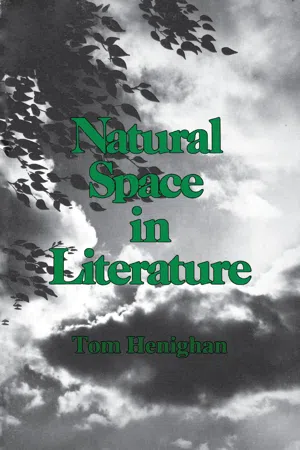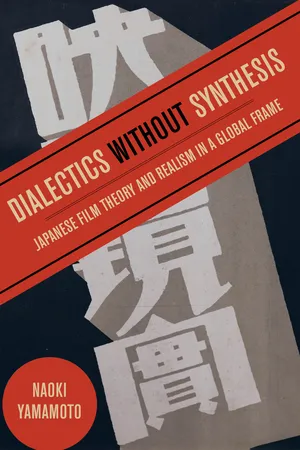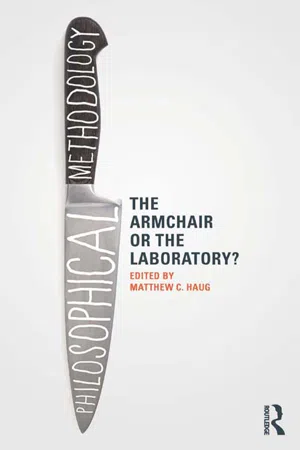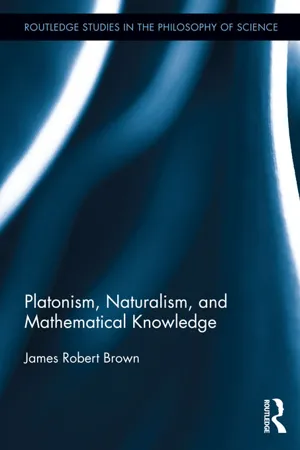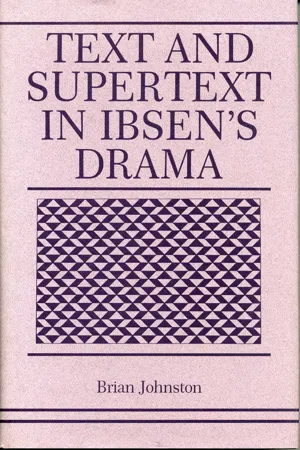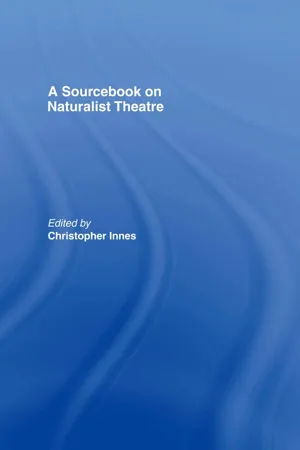Literature
Naturalism
Naturalism in literature is a literary movement that emerged in the late 19th century, focusing on the realistic portrayal of everyday life and the influence of environment and heredity on human behavior. Naturalist writers sought to depict the harsh realities of life, often exploring themes of determinism, survival, and the struggles of the working class. This literary style often featured characters facing social and environmental forces beyond their control.
Written by Perlego with AI-assistance
Related key terms
1 of 5
12 Key excerpts on "Naturalism"
- eBook - PDF
Natural Space In Literature
Imagination and Environment in Nineteenth and Twentieth Century Fiction and Poetry
- Tom Henighan(Author)
- 2013(Publication Date)
- Dundurn Press(Publisher)
12 Their view is that Natu-ralism attempted to program itself after the revelations of Darwinism, that it was Realism made more scientific and more ruthlessly coherent. One such definition of Naturalism, for example, states that: Naturalism appears in a novel when the philosophy of materialistic monism is somehow applied to its conception or execution. The perfectly naturalistic novel would be one in which the action is completely determined by material forces — economic, social, physiological. For this condition to exist a corollary requirement with respect to the characters of the novel must be fulfilled: they too must be explained in these terms that impressions of free will and ethical responsibility do not intrude to disrupt the relentless operation of this material causation. 13 Several things come to mind when one reads such a definition. First, that such a philosophy, rigorously applied, would lead to the destruction of literature and not its creation. It is difficult to imagine such a work being produced; certainly, none has ever been written. The intrinsic character of literature seems to defy such an expression. What then, is Naturalism? We can perhaps clarify the situation by looking somewhat closely at a fairly typical Naturalistic work. On the basis of this, and from an extensive knowledge of a great many other productions of the same kind, we can confidently pinpoint some of the limitations and possibi-lities inherent in Naturalism. Reading Jack London's story of 1908,' 'To Build a Fire'', one engages a work which is straightforward and almost naive, in the vein of popular literature, and at the same time, a narrative that is being controlled and shaped toward an artistic effect. It is the story of a man on the trail with his 26 dog in unusually severe temperatures. The man fails to build a fire and freezes to death, and his dog trots off to find other food-providers and fire-providers. - eBook - PDF
Naturalism in Theatre
Its Development and Legacy
- Kenneth Pickering, Jayne Thompson(Authors)
- 2018(Publication Date)
- Red Globe Press(Publisher)
This Naturalism was the basis of a major new kind of writing, and the philosophical position was explicitly argued: cf. Strindberg: ‘the naturalist has abolished guilt by abolishing God’; ‘the summary judgments on men given by authors […] should be challenged by naturalists, who know the richness of the soul-complex and recognize that “vice” has a reverse side very much like virtue’ ( Preface to Lady Julie, 1888). A new importance was given to the environment of characters and actions. ( Environment in its special and I N I T IA L D E F I N I T I O N S | 5 now primary sense of the conditions, including the physical conditions, within which someone or something lives and develops, was an associated eC19 development from the earlier general sense of surroundings.) Character and action were seen as affected or determined by environment , which espe-cially in a social and social-physical sense had then to be accurately described as an essential element of any account of a life.This connected with the sense of careful and detailed observation, from natural history, but it was not (as was later supposed) detailed description for its own sake, or from some conventional plausibility; rather it rested on the new and properly naturalist sense of the determining or decisive or influential effect of an environment on a life (in the variations between determining and influential much of the subsequent development can be understood) […] (218–19) Williams, in his essay ‘Social Environment and Theatrical Environment – The Case of English Naturalism’ provides a more concise overview: ‘there are three relevant senses of Naturalism and the associated “naturalist” and “naturalistic”’ (1980: 125). The first and probably most commonly used relates to: ‘a method of “accurate” or “lifelike” reproduction’ which we might more usefully consider as technical Naturalism. The second relates to ‘a philosophical position allied to science, natural history and materialism’ (125). - Available until 23 Dec |Learn more
- Øystein Sjåstad(Author)
- 2017(Publication Date)
- University of Washington Press(Publisher)
5Marxist literary theory commonly looks at Naturalism as something that follows realism alongside formalism. In Terry Eagleton’s words, “Realism, deprived of the historical conditions which gave it birth, splinters and declines into ‘Naturalism’ on the one hand and ‘formalism’ on the other.”6 Georg Lukács describes “the pseudo-objectivism of the naturalist school and the mirage-subjectivism of the psychologist or abstract-formalist school.”7 Naturalism as represented by Zola is, according to Lukács, the result of the failure of the 1848 revolution. This event marked the freezing of the class struggle; the bourgeois class gave up its revolutionary ideals and, to quote Eagleton, “accepted society as a natural fact.”8 For Lukács, Balzac is the last writer who depicted a real class struggle. Naturalism is an impoverishment of literature. With Zola and Naturalism, the writer became a passive observer: “The writer no longer participates in the great struggles of his time, but is reduced to a mere spectator and chronicler of public life.”9 The greatest example of this was the naturalist writers’ use of extremely detailed description, as if they had a camera. They emphasized individual details instead of the typical; average life, psychology, and physiology became the determining forces in their narratives. To Lukács this is an alienated vision of reality, and the writer goes from being a realist — an active participant in society — to being a clinical observer, using Naturalism as his method. Eagleton summarizes: “Lacking an understanding of the typical, Naturalism can create no significant totality from its materials; the unified epic or dramatic actions launched by realism collapse into a set of purely private interests.”10 But Zola wanted Naturalism to be a more democratic form of the realism of the 1850s, which he claimed was “exclusively bourgeois.”11 He wanted naturalist art to be about the other - eBook - ePub
Dialectics without Synthesis
Japanese Film Theory and Realism in a Global Frame
- Naoki Yamamoto(Author)
- 2020(Publication Date)
- University of California Press(Publisher)
For this reason, some people have even begun to adopt ‘no solution’ [as the motto of Naturalism].” 16 Undoubtedly, this was a radical claim that to some extent anticipated the emergence of anti-humanism in a later period. But for the same reason, it stimulated a number of disputes among his fellow Japanese writers and critics, and from these disputes emerged what Shimamura called the “second-generation naturalist writers.” This generation, composed of writers such as Shimazaki Tōson, Tayama Katai, and Tokuda Shūsei, shared a tendency to foreground the protagonist’s emotional development, deliberately incorporating in their novels the romanticist motif of Sturm und Drang. 17 Critics who supported these second-generation naturalist writers thus sought to revise the definition of Naturalism. One such critic, Sōma Gyofū, wrote in 1907 that Naturalism is a name given to “the self-awareness that has coincidently reached the integration of subjective and objective visions after long and tiring conflicts between knowledge and emotion.” More precisely, continued Sōma, Naturalism is a method to “reflect upon the internal [state of mind] with the intellectual attitude that had previously been applied to the phenomena of external nature.” 18 It is this particular understanding of Naturalism as the integration of subjective and objective visions that informed the later development of modern Japanese fiction. Following the success of Katai’s semi-autobiographical novella The Quilt (Futon, 1907), this localized form of Naturalism eventually led to the emergence of the “I-novel” (shi- or watakushi-shōsetsu), a literary genre in which the first-person narrator, who is usually identified with the writer himself, offers a very detached and objective description of his own personal life. This new trend came to occupy the central place in the Japanese literary world from the late 1910s onward, following the success of writers associated with the White Burch School (Shirakabaha) - eBook - PDF
- Yervant H. Krikorian(Author)
- 2019(Publication Date)
- Columbia University Press(Publisher)
14 Naturalism IN AMERICA Harold A. Larrabee THE career of Naturalism in America is the history of the slow growth of an attitude rather than of a specific philosophical doctrine. It has meant the gradual development and spread of a point of view that is at once naive and sophisticated. Those who have come to share the natural-istic outlook, while they may differ in many details, tend to begin with whatever confronts the human observer in his complete daily living and to endeavor to frame a satisfactory account of it in its own terms. They agree, that is, in rejecting the aid of congenial but unverifiable-myths masquerading as literal truths. It should not be necessary to point out that Naturalism, in the words of Santayana, may find room for every sort of psychology, poetry, logic, and theology if only they are con-tent with their natural places. Naturalism will break down, however, as soon as words, ideas, or spirits are taken to be substantial on their own account, and powers at work prior to the existence of their organs, or independent of them. 1 This approach implies a willingness, even an eagerness, to face all the facts in any situation with a minimum of distortion by personal desires or prejudices. If there is any way to avoid it, we must not deceive our-selves. History must not be read in terms of what we wish it might have been. This is not to make the absurd claim that bias can be wholly elimi-nated, but rather that it can be, and on naturalistic premises it must be, acknowledged and guarded against. T o be credited with any degree of consistency, therefore, the naturalistic historian must begin his account with the frank admission that American philosophy in the usual sense of the doctrines professed in our colleges and publications has been, throughout most of its history, theological and idealistic—the very opposites of naturalistic. - Matthew Haug, Matthew C. Haug, Matthew Haug, Matthew C. Haug(Authors)
- 2013(Publication Date)
- Routledge(Publisher)
The question Naturalism faces is whether a discipline like literary theory provides real knowledge. (Naturalism can’t dodge these questions because it won’t uncritically buy into Williamson’s “default assumption … that the practitioners of a well-established discipline know what they are doing, and use the available methods most appropriate for answering its questions”; p. 31.) If semiotics, existentialism, hermeneutics, formalism, structuralism, post-structuralism, deconstruction and postmodernism transparently flout science’s standards of objectivity, or if they seek arbitrarily to limit the reach of scientific methods, then Naturalism can’t take them seriously as knowledge. That doesn’t mean anyone should stop doing literary criticism, any more than they should be foregoing fiction. Naturalism treats both as fun, but neither as knowledge. What naturalists really fear is not becoming dogmatic or giving up the scientific spirit. It’s the threat that the science will end up showing that much of what we cherish as meaningful in human life is illusory. 3 The unclarity of Naturalism TIMOTHY WILLIAMSON In response to my question ‘What is Naturalism?’, Alex Rosenberg defines it as ‘the philosophical theory that treats science as our most reliable source of knowledge and scientific method as the most effective route to knowledge’ (p. 32). In ‘Why I Am a Naturalist’ (Chapter 2, this volume), he nicely exemplifies one of my main complaints, by leaving it unclear what he means by ‘science’ or ‘scientific method’, even though it is crucial for what he is committing himself to as a ‘naturalist’. Still, there are clues. He describes ‘the test of knowledge that scientific findings attain’ as ‘experimental/observational methods’, which suggests that theorems of mathematics would not count as scientific findings. The impression is confirmed by Rosenberg’s phrase ‘mathematicians and cientists’, as though he doesn’t see mathematicians as scientists (p. 34)- James Robert Brown(Author)
- 2013(Publication Date)
- Routledge(Publisher)
2 What is Naturalism?Naturalism is a cluster concept, like religion or realism, and similarly vague. There is no single defining characteristic of religion, only a collection of imprecise conditions that overlap or even conflict with one another. Something is a religion if it has many of those characteristics, but no condition is either necessary or sufficient. For example, most (but not all) religions have a supreme being; most (but not all) claim the supreme being is the creator of all things and has a personal interest in each of us; most (but not all) provide a moral code that guides our behaviour; most (but not all) call for worship and ritual performance on a regular basis; most (but not all) have a special class of people (gurus, mullahs, priests, rabbis) who interpret the religion to others; and so on. Some of the most important concepts in philosophy and daily life are like this: democracy, or a dignified death, for example. We spend at least as much time arguing about the nature of the concept of democracy as we do about the proposition that it is or isn't a good thing.Because it's so hard to pin down such concepts, there's a strong temptation to toss them aside and to focus on something else. We sometimes hear: “Since we can't agree on what ‘realism’ means, let's not even use the term.” This would be rash. Rival versions of realism are often driven by similar motivations, similar enough that it is useful and instructive to lump them together. Though it's doubtful we'll find any condition that is sine qua non for every self-avowed naturalist, there is a kind of common ground they share. Briefly, it's something like this: All facts are natural facts and only natural science can discover and explain them. Of course, some fleshing out is required and a few statements of Naturalism will be helpful.1- eBook - PDF
- Brian Johnston(Author)
- 1989(Publication Date)
- Penn State University Press(Publisher)
The fewer details of realist art seem richer in implication, the "terms" of the method more loaded with significance. The older, looser method of a Balzac or Dickens or George Eliot seemed to address itself to a possible "general public": The new Realism seems a product of, and for, the alienated consciousness of the modern spirit, whose origins can be traced in postrevolutionary European thought. This new literature of the alienated spirit stands in highly critical relation- ship to the social reality it portrays, as an attack upon that reality or, in Michel Foucault's phrase, as a "counter discourse" to it. A study such as M. H. Abrams's Natural SuperNaturalism reveals the emergence of this alienated spirit in British and German Romanticism, Schiller's essay On Naive and Sentimental Poetry and Hegel's The Phenomenology of Mind being classic docu- ments of the movement on the Continent. We see the continua- tion of this movement, in the theater, in the works of Schiller, Kleist, Buechner, Richard Wagner, and Ibsen, up to the avant- garde dramatists of modern times. Realism was an expression of this movement, one of its significant stages, and it is because of the peculiar richness of the realist aesthetic as an expression of this modem spirit that Ibsen remains as central to the modern tradition as, say, Manet and Cezanne remain central to the tradi- tion of modern painting. In a recent study of Realist painters, Charles Rosen and Henri Zerner observe that, in the authentic realists, the "subject" loses its importance, while the artistic act itself becomes the subject, assuming, in fact, the place of honor once held by the subject. If contemporary life was to be represented with its banal- ity, ugliness and mediocrity undistorted, then the aes- thetic interest had to be shifted from the objects repre- Ibsen's Realist Aesthetic 31 sented to the means of representation. - eBook - ePub
- Christopher Innes(Author)
- 2002(Publication Date)
- Routledge(Publisher)
3 CONTEMPORARY THEORIES OF NaturalismThe documentation in this section focuses on the theoretical basis for Naturalism in dramatic writing and on the stage. It traces the development of each of the major playwrights, covering both the intellectual and political impetus expressed in the movement, as well as aspects of performance and theatrical presentation.1 GEORG BRANDES AND HENRIK IBSEN
Georg Brandes’ polemic 1871 lecture emphasized the need for social relevance in contemporary literature. Demanding political involvement – and citing Ibsen’s Brand as an example of the abstract idealism to be avoided – it acted as a clarion call for the new naturalistic drama. The opening lecture in a series delivered at the University of Copenhagen, which aroused violent controversy, it was published a year later in the first of his influential six-volume study of Main Currents in Nineteenth-Century Literature . This made him a dominant figure in the intellectual world of the time, even if it was almost 30 years before he gained a university appointment. Although focussed almost entirely on Danish writing, given the political (and linguistic) history of Scandinavia, Brandes’ arguments were equally applicable to the other countries, particularly Norway. And while dealing with literature in general rather than drama, this in itself foreshadowed the link between drama and the novel, which was one of the most productive aspects of the naturalistic movement.To a significant degree, this inaugural lecture forms part of an ongoing argument between Brandes and Ibsen, who was already in the habit of sending his scripts to Brandes for commentary, and had been following Brandes’ lectures closely since 1866. Indeed some of the points are a rebuttal of a letter by Ibsen from ten months before, in which Ibsen had asserted his principle of individualism, dismissing Brandes’ call for national independence:As to liberty, I take it that our dispute is a mere dispute about words. I shall - eBook - PDF
How to Make Believe
The Fictional Truths of the Representational Arts
- J. Alexander Bareis, Lene Nordrum, J. Alexander Bareis, Lene Nordrum(Authors)
- 2015(Publication Date)
- De Gruyter(Publisher)
One can falsify realist descriptions by looking and seeing if they correspond to reality: Look within and life, it seems, is very far from being ‘like this’. Examine for a moment an ordinary mind on an ordinary day. The mind receives a myriad impressions – trivial, fan-tastic, evanescent, or engraved with the sharpness of steel. (Woolf 1966, 106) The Concept of Literary Realism | 27 So, if one opens up the concept of reality as it occurs in the criterion ‘providing a truthful/objective representation of some aspect of reality’, this criterion can-not be used to distinguish between the modes of writing that literary critics have been identifying as realism and modernism. The concept of realism has then lost its usefulness as a critical concept. The attack on literary realism by post-modernist critics was part and parcel of a wider attack on humanism. An unanalysed concept of realism with its ap-parent conceptual link to reference and truth provided an easy target for critics who wanted to undermine humanist values. And the response to post-modernist critics was not really a defence of realism, but, in Gerald Graff’s (1979, 193) words, “a realist defence of humanism”. And in this struggle the concept of realism was itself a casualty. When the concept of realism is put under pressure, as it was by Lukács and post-modernist critics, it breaks, and it breaks at a very important point. A concept of realism which licences the con-clusion that modernism leads to the destruction of literature, that only naïve readers can find any satisfaction in realist literary works, or that realist novels are not really realist, or that, contrary to all empirical evidence, realism is dead, is simply useless as a critical tool. The effect of the debate between post-modernist critics and the defenders of realism was to derail any fruitful discussion of realism for thirty years. - eBook - PDF
European Literature from Romanticism to Postmodernism
A Reader in Aesthetic Practice
- Martin Travers(Author)
- 2006(Publication Date)
- Continuum(Publisher)
Source: Conrad Alberti, 'Die zwolf Artikel des Realismus: Ein litterarischcs Glaubensbe-kenntnis', in Die Gcsclbchaft: Mmiatsscltrift fur Littcratnr mid Kunst (1889), no. 1, pp. 2—4. There-is no standard translation. Further reading: Lilian R. Furst and Peter N. Skrine, Naturalism (London: Methuen, 1971), esp. pp. 37-41. 112 European Literature from Romanticism to Postmodernism 2 Because it is an essential part of human culture, art is subject to the organic law of progressive development, the supreme of all natural laws. Art is continually engaged in this process of progressive development, both viewed as an entirety and in terms of particular art forms. Only from the point of view of a continual progressive development of circumstances that are grounded in the natural necessity of human arrangements in all their actuality can a factual and positive judgement on artistic periods, artists and works of art be established. Because nationality and race are natural and, we must suppose, foundational (not artificial), or, at the very least, original institutions of mankind, so is the call for a national culture, and with it an art that reflects the character of its people in all the phases of its development, entirely justified. Every national art is, therefore, an organic totality, either complete within itself, or continually developing, born from the actual spirit of the nation, along with which it develops. It is not to be likened to some hastily produced or thrown-together pyramid of good, bad, average collections of books, paintings, statues, etc. 3 Since all the laws of nature, which regulate mechanical events in the physical world, also determine all intellectual events and phenomena, so art is also subject to exactly the same laws as the mechanical world. - eBook - PDF
- Peter Remien, Scott Slovic(Authors)
- 2022(Publication Date)
- Cambridge University Press(Publisher)
Seen as an antidote to the excesses of postmodernism and poststructuralist theory, nature writing in the realist mode and its early ecocritical champions sought (sometimes tacitly, sometimes explicitly) to rehabilitate the Aristotelian maxim “art imitates nature.” Ursula K. Heise, however, points out that many contemporary ecocritics don’t subscribe to such a clear and ethically unproblematic connection between art and phys- ical nature, noting in ecocritical discourse the persistence of “the question whether an aesthetic appreciation of nature brings one closer to it or alienates one from it.” For the Marxist philosopher Adorno, for example, “Art stands in for nature through its abolition in effigy; all naturalistic art is only deceptively close to nature because, analogous to industry, it relegates nature to raw material.” Adorno’s point, taken up by a number of ecocritical scholars, is that art, like the industrial technologies responsible for nature’s destruction, facilitates humanity’s alienation from nature. I. Nature Writing and Its Discontents The literary genre of nonfiction nature writing, which enjoyed a heyday during the final decades of the twentieth century, especially in North America, has received considerable criticism as being passé and excessively narrow in representing the breadth of human cultural responses to the Introduction: The Nature of Literature more-than-human world in the early decades of the new century.
Index pages curate the most relevant extracts from our library of academic textbooks. They’ve been created using an in-house natural language model (NLM), each adding context and meaning to key research topics.
